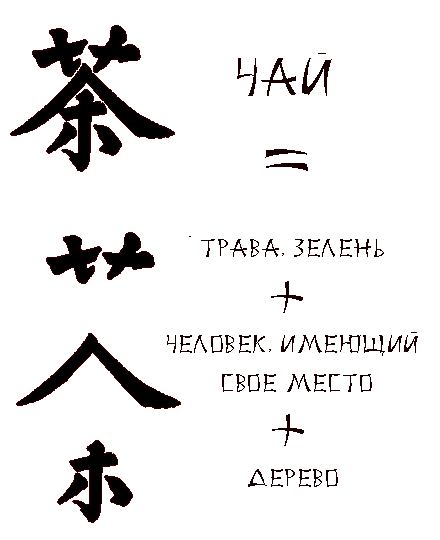
- •Муниципальное бюджетное общеобразовательное учреждение лицей №2
- •Глава 2. Распространение чая.
- •2.1 Появление чая в Англии.
- •2.2 Появление чая в России.
- •Глава 3. Чайные традиции.
- •3.1 Чайные традиции в Англии.
- •3.2 Чайные традиции в России.
- •3.3 Сходство и различие чайных традиций в Англии и России.
- •Исследование, посвященное осведомленности учащихся 5-6классов о традициях русского и английского чаепития
- •4.1 Описание результатов исследования
- •4.2 Описание продукта исследования
- •Заключение
- •Анкета для учащихся
Муниципальное бюджетное общеобразовательное учреждение лицей №2
________________________________________________________________
Traditions
of tea-drinking in Russia and England.
Research work
Created by: Lokhmatova D., form 6V
Guided by: Kochkina L.P., the English teacher
Surgut
2012
Сontent.
Introduction .......................................................................................................3 - 4 Chapter 1. The origin and meaning of the word "tea" ........................................5 - 6 Chapter 2. Distribution of tea ..................................................................... ……7 2.1 The emergence of tea in England .......................................................7 - 8 2.2 The emergence of tea in Russia .......................................................9 - 10 Chapter 3. Tea traditions ............................................................... …………..11 3.1 Tea tradition in England .................................................................11 - 15 3.2 Tea tradition in Russia ............................................................... ...16 - 21 3.3 Similarities and differences of tea traditions .................................22 - 24 Chapter 4 Research devoted to the awareness of students 5-6 classes about traditions of the Russian and English tea-drinking…………………………...25 4.1 Description of research results...................................................... ..26-27 4.2 Description of research product....................................................... Conclusions .............................................................................. ……………...29-31
Literature……………………………………………………………………...32
Appendix………………………………………………………………………33-34
Introduction.
"If you are cold, tea will warm you;
if you are depressed, it will cheer you;
if you are excited, it will calm you.“, said William Gladstone.
"Tea" is known in the world for more than five thousand years. We cannot imagine our life without tea. Among the variety of drinks that are made by people, tea is the best known. It is drunk in every corner of the earth. Annually increase the consumption of this drink. By popularity, he ranks second in the world after water and submitted to all continents.
Every country has its own history of the spread of tea. Tea is popular in many countries and each country has own traditions and preferences in drinking of tea. Returning to the original sources of tea traditions in England and Russia, we are going to compare tea traditions in these countries.
The problem of studying this topic is that there is a need for awareness of the importance of tea traditions in England and Russia as a component of culture in these countries. I think this topic is interesting, useful me and everyone who loves the Russian culture. Since I'm studying English, I have decided to learn more about the history, traditions and customs of tea drinking in England too, to find out whether the preserved tradition of tea drinking in Russia and England, and to compare these traditions emphasize the similarities and differences in the characteristics of Russian and English tea.
The aim of this project is to study the tea traditions of England and Russia.
To achieve this goal, we set the following objectives: - To learn the material on investigations
- To characterize the notion of "tea"; - Analyze and describe the history of tea drinking in Russia and England - Compare the peculiarity of the traditions of Russian and English Tea - To identify differences in the tea traditions of England and Russia; - Prepare and conduct a survey among students of the Lyceum, to find out whether they know about the peculiarities of tea in Russia and England - To make a booklet, quiz devoted to the peculiarities of tea in Russia and England.
The object of the study are tea traditions. The subject - the culture of tea drinking in England and Russia.
Hypothesis - the study of tea traditions in England and Russia helps preserve the culture of tea drinking.
In our work we used the following methods:
- descriptive method - analysis and synthesis of materials from various sources on the subject of research - a comparison of features of the traditions of tea drinking in Russia and England - to form the questionnaire to find out what students know about the tea party in Russia and England
The practical significance of our work is that the collected material can be used on the English lessons.
Chapter 1. The origin and meaning of the word "tea".


Откуда возникло это слово и что оно означает для нас? Давйте рассмотрим структуру иероглифа 茶 (чай). В китайской философии особое значение отводят числам, поскольку именно они отражают действительность. Итак, иероглиф имеет три составляющих. Верхний иероглиф 廿 — «трава», он равнозначен числу 20. В центре находится 人 – «человек», ему соответствует число 8. И завершает композицию, конечно же, иероглиф 木 — «дерево», который напоминает 10. Сумма верхнего и среднего чисел составляет 28, а среднее и нижнее соответствует числу 80. Согласно чайной математике сумма их сакральное число – 108 (28 + 80 = 108), символизирующее долголетие. Итак, чай – напиток долголетия.
Что же заключает в себе иероглиф 茶? Эстетику отношений человека и природы.
В Китае чай имеет сотни названий, в зависимости от района произрастания. Но самое употребительное наименование, обобщающее и чаще всего присутствующее в сложных составных названиях сортов, – это «ча», что значит «молодой листочек». Но иероглиф для обозначения чая на всем пространстве Китая одинаковый. Это один из самых древних иероглифов, созданный в V веке, когда возник сам термин, само слово «чай».
В Россию чаи поступали испокон веков из Северного Китая. От русских это название восприняли большинство народов нашей страны и такие славянские народы, как болгары, чехи, сербы.
Японцы и корейцы, соседствующие с Восточным Китаем, слово «чай» произносят как «тьа». Отсюда и пошло наименование чая у большинства европейских народов, впервые познакомившихся с чаем либо через Юго-Восточный Китай, либо через Японию и вывозивших его из Амоя, отчего именно амойское произношение – «тьа» или «теа» – было положено в конце XVIII века в основу ботанического латинского названия чая (Thea), и это слово англичане стали произносить как «ти».
